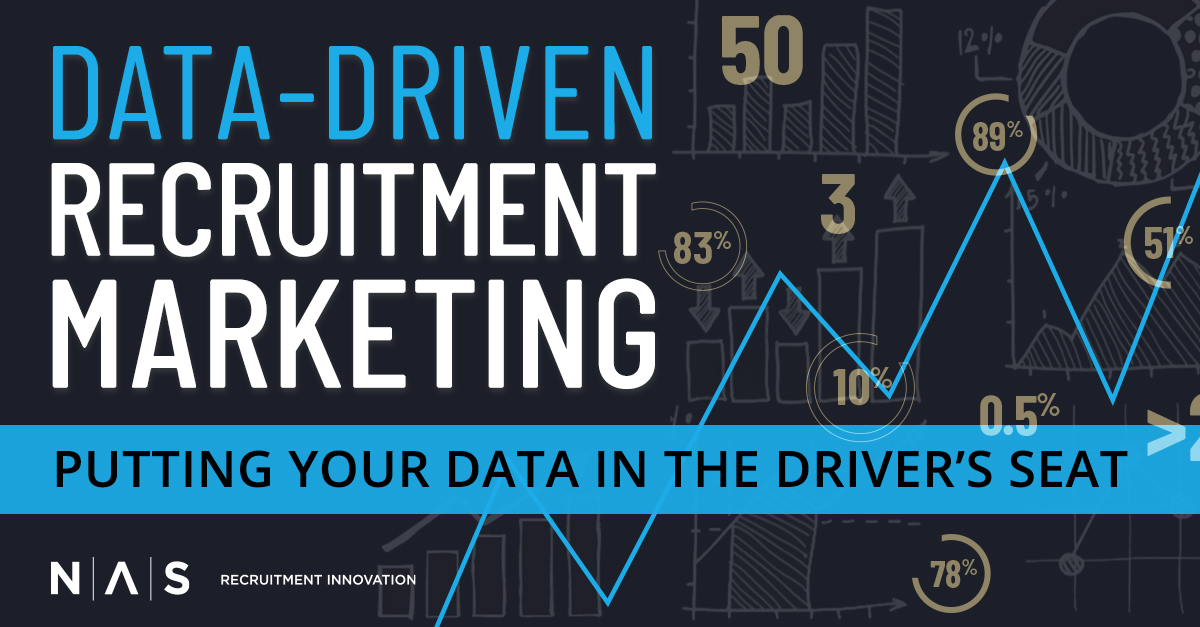-
Data-driven recruitment marketing that works.
Posted by Ashley Kauffman on August 4th, 2023 
Although the recruitment competition is beginning to cool down, we’re still seeing some uncertainty in the job market. The sizable decrease in job openings we saw in 2022 was encouraging, but the labor market still has over 10 million unfilled positions. Similarly, while the median cost-per-application (CPA) was at $25.00 in late 2022 – an improvement from the highs of 2021 – it’s still elevated compared to the pre-pandemic cost. Regardless of the economic climate, employers and HR still need to compete for talent.
Between the uncertain economy and new trends reshaping the world of work, it’s a challenging and pivotal time to be a recruiting leader. But you can become a true changemaker at your organization. In this blog post, we’ll help you learn how to be strategic, adaptable and acutely in tune with talent, all with the help of data-driven strategies.
In this blog post, we’ll focus on:
- Determining what metrics you need to measure
- Using the data to improve your recruitment and retention rates
- What you can learn from the data
Identify what KPIs are most valuable in driving your strategy forward.
According to TalentHub, there are six important KPIs, or Key Performance Indicators, that your recruiting team should be tracking as we move into the second half of 2023.
Time to Fill
Time to fill refers to length of the hiring process, from the day the job is posted, to the moment the employee is officially hired. Calculating and tracking your time to fill is the best way to understand how long it takes to bring in new employees, as well as highlighting areas that might be obstacles to this process. It is important to note, however, that “rushing the recruitment process can result in hiring the wrong candidates or creating a negative Candidate Experience, which can be detrimental to the organization in the long run” (TalentHub, 2023). According to Zety, however, 55% of candidates believe it should take between one to two weeks from the first interview to being offered the job.
Candidate Experience
At NAS, we talk a lot about candidate experience because we know just how important it is to the success of your recruiting efforts. You can read more about improving the candidate experience here. So, why is candidate experience important to measure? According to Glassdoor, “Organizations that invest in a strong candidate experience improve their quality of hires by 70%.” Negative experiences can cause harm to your organization’s reputation, which negatively impacts your overall hiring efforts since 69% of job applicants said company reputation impacts their willingness to accept a job offer.
Candidate Net Promoter Score (cNPS)
The Candidate Net Promoter Score allows recruiters to determine the success of their candidate engagement strategies and measure how likely a job applicant is to refer others based on their experience. The cNPS is calculated by subtracting the percentage of detractors (candidates who would not recommend the company) from the percentage of promoters (candidates who would recommend the company). According to LinkedIn, the cNPS is important because, 1) it measures candidate perception, 2) you can measure your progress, 3) you can evaluate all the steps of the candidate experience, and 4) it helps you reach new talent.
Cost Per Hire
Let’s talk dollars. Cost per hire is the total cost of filling an open position within your organization. This can include advertising, time, onboarding, equipment and more. As of April 2022, SHRM determined the average cost per hire to be almost $4,700. Hiring is pricey, so it is important to monitor your cost per hire and determine how you can make this process more efficient to get the best bang for your buck. For example, keeping track of your budget can keep you prepared for unforeseen hiring needs and give you the financial flexibility to hire the right person for the job. Similar to time to fill, however, a low cost does not always mean your process is effective. If your cost per hire is low, yet your retention rates are decreasing, you might not be hiring the right people for your organization. Thus, increasing your spend on advertising could be more effective and cheaper overall.
Source of Hire
The source of hire “shows what percentage of your overall hires entered your pipeline from each recruiting channel or source” (Workable). Understanding where your candidates are coming from allows you to allocate the proper resources to the right places. According to Indeed, internal talent is one of the best sources for candidates and many organizations see the majority of their candidates come from their existing workforce. In this case, shifting your resources to creating and promoting a solid Employee Referral Program could help your organization optimize your recruiting efforts. To learn more about ERPs, check out our blog post here. Tracking this data can be complex, so investing in a solid ATS is key to understanding your recruiting pipeline.
Quality of Hire
When you effectively implement all your collected data, you will bring in quality employees. The quality of hire is determined by job performance, retention rate, cultural fit and employee satisfaction. The higher these scores, the more effective your hiring efforts. Although quality of hire is measurable by itself, in order to improve this KPI, you will need to adjust other KPIs, including those discussed above, or other factors such as your job descriptions, career site and employer brand. You can learn more about building an effective career site here and developing an engaging employment brand here.
It’s important to note that, depending on the area of the recruiting funnel that you are trying to support or improve, your KPIs might change.
In addition to the KPIs discussed above, NAS ACTIVATE® Analytics also provides our clients with important data, including Application Conversion, device type, Media Spend, Cost Per Apply and Conversion. To learn more about our Analytics package or to request a demo, visit https://www.nasrecruitment.com/recruitment-analytics/.
How to utilize data to plan for future success
The data collected from these metrics can help you form a strategy to recruit top talent as effectively and efficiently as possible. If you are just beginning to implement these KPIs, you will need to establish a baseline. Each KPI must have a clear starting point that can (and should!) be modified based on any impactful changes to ensure a regular data flow. For example, if your organization just launched a career site, it may take 2-4 weeks to normalize traffic, so the starting point should be from the ‘normal,’ not necessarily the launch time.
Another thing to consider is the timeframe you are measuring and how often you are reviewing your data. We suggest looking at this information monthly to recognize areas that can be optimized immediately, and also reviewing the data quarterly to assess trends.
What you can learn from the data
Optimize recruitment efforts and spending.
With real-time dashboards and smart automation, talent teams can easily compare advertising metrics, adjust tactics and spend, and refine or retarget advertising to ensure optimal results, in any season of hiring.
Access reports with actionable insights.
Assess and elevate every touchpoint along the talent journey with advanced reporting and visibility into your talent network and interactions.
Measure and monitor activities.
Aggregate all your recruiting efforts and talent network into one system, ensuring a single source of truth for all data and delivering greater insights for decision-makers.
NAS can help you empower your analytics and improve your results. NAS provides an enhanced suite of analytics for our clients with NAS ACTIVATE® Analytics. The comprehensive data provided will elevate your visibility from source to hire, help you optimize the candidate experience and enable you to make -smarter buying decisions.
Ready to let your data drive? Contact us today!
Ashley Kauffman
As Director of Analytics with NAS Recruitment Innovation, Ashley works closely with our clients to help them strategize on recruiting A-level talent based on data intelligence. Ashley focuses on telling a story for our clients in a way that not only validates their current strategy, but also anticipates future opportunities. Whether your goal is delivering effective employment brands, career sites and social media strategies, or comprehensive online or traditional ad campaigns, Ashley leverages her ten plus years of industry experience to achieve success and exceed client expectations.

